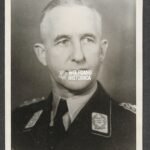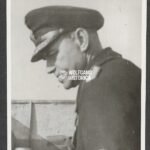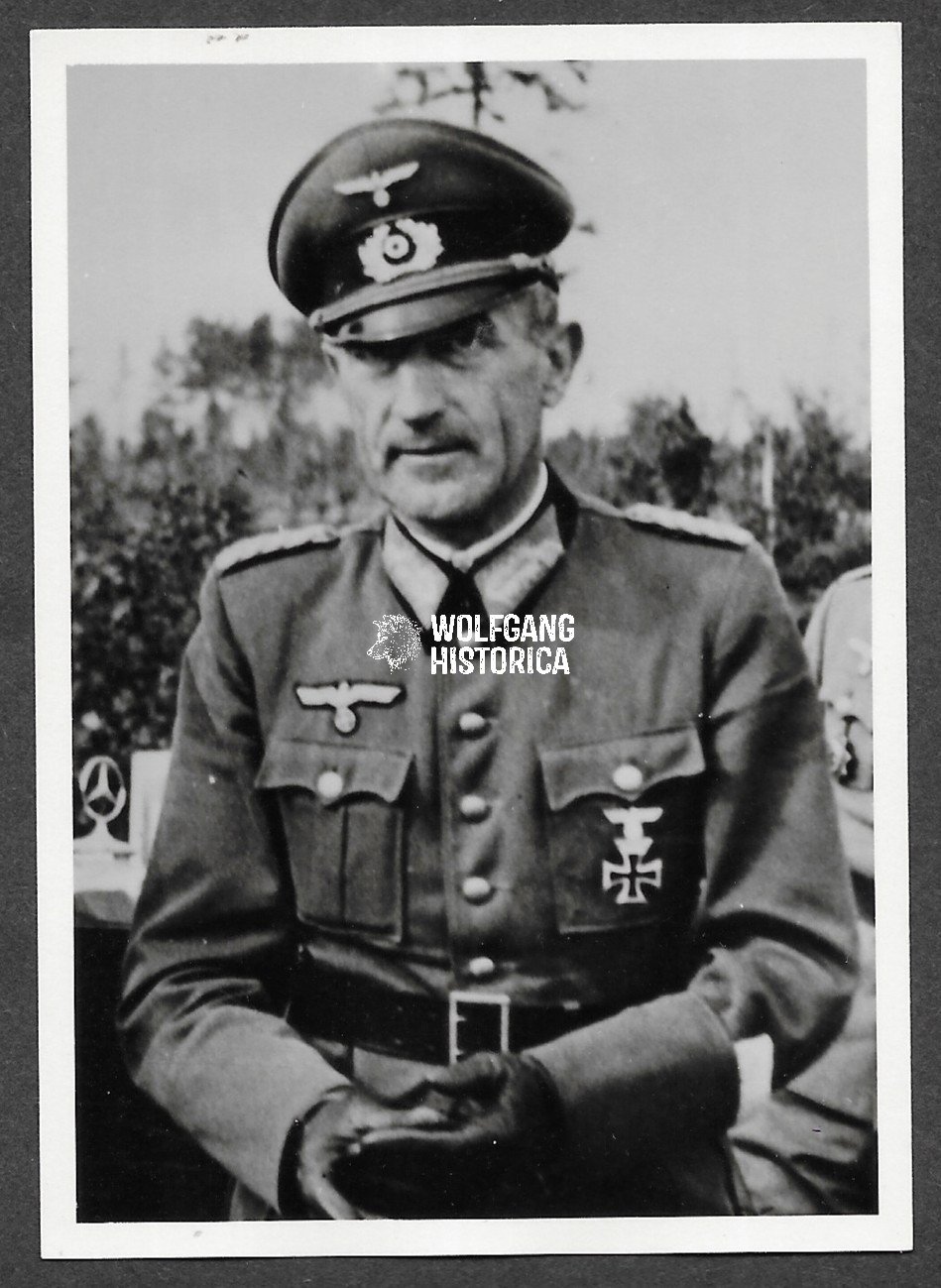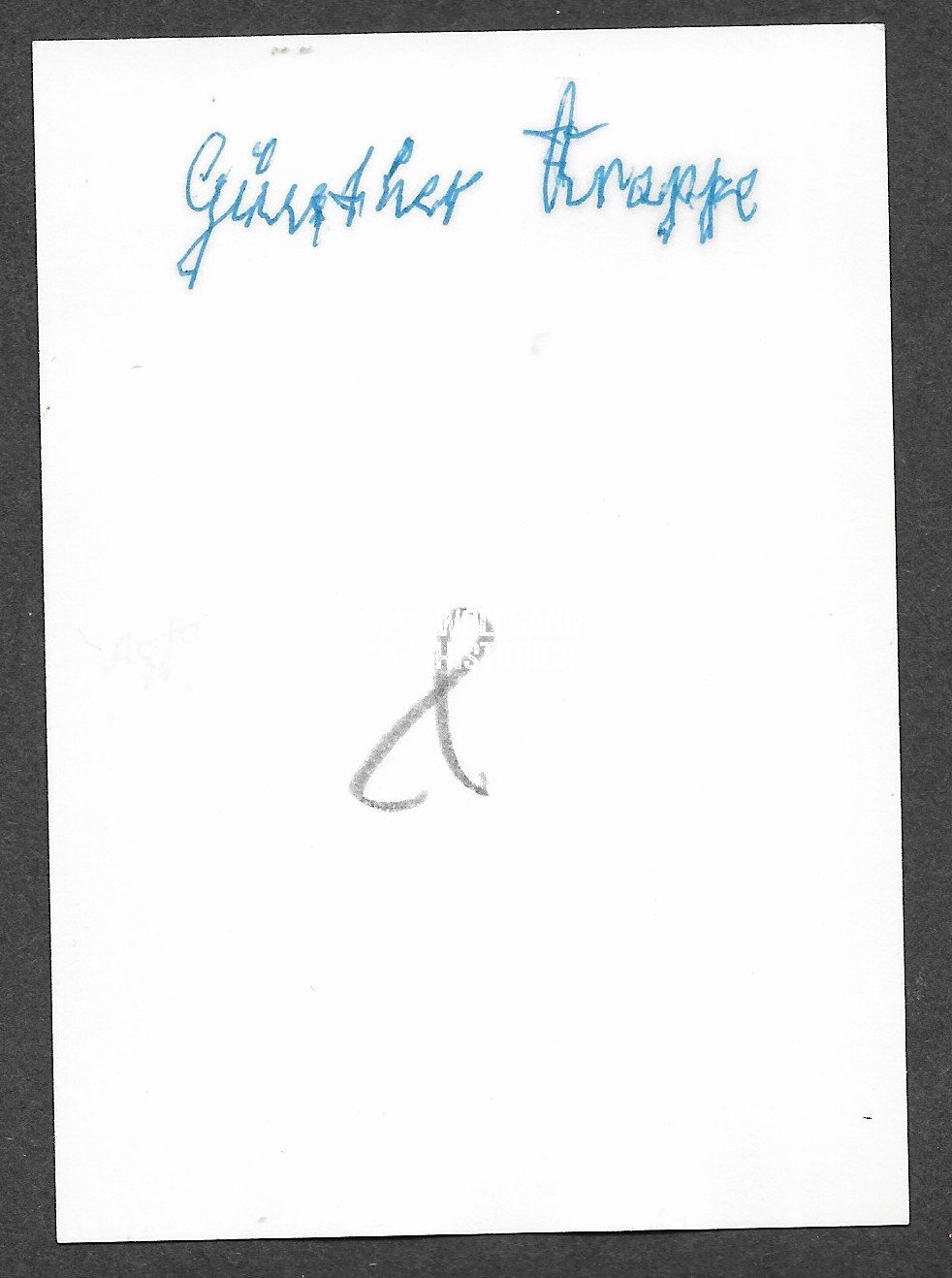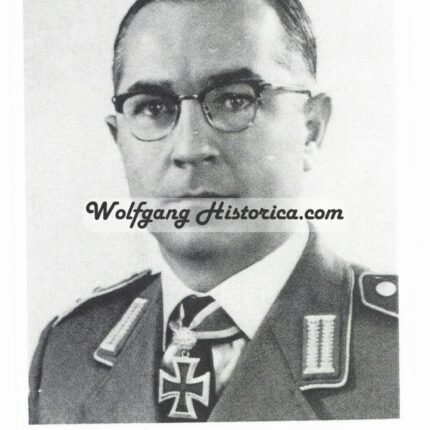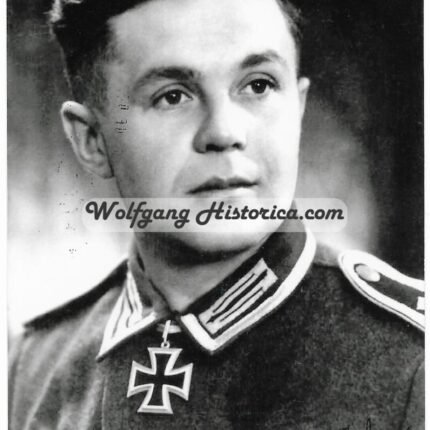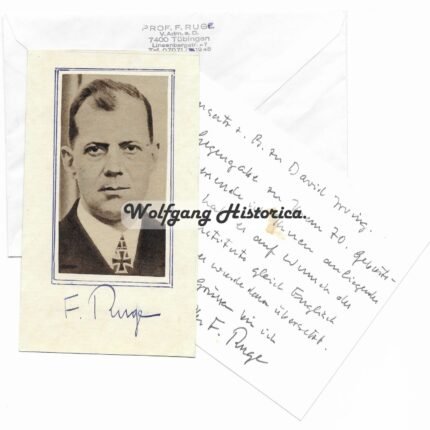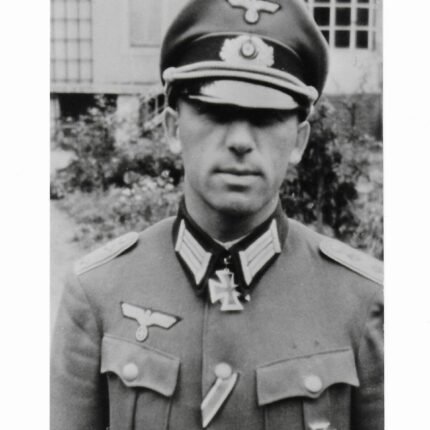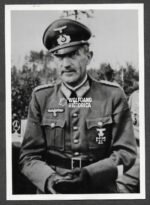
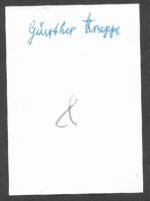
Günther Krappe – 61. Infanterie-Division
€40,00
Original Postwar Signature on a Postwar Photo of Günther Krappe. Generalleutnant Günther Krappe (13 April 1893, Schilde † 31 December 1981, Altena) was a German Army officer who reached the rank of Generalleutnant during the Second World War. His career included front-line regimental and divisional command as well as high-profile diplomatic roles as military attaché in Hungary and Spain. He is best remembered as commander of the 61. Infanterie-Division on the Eastern Front, where he earned the Knight’s Cross of the Iron Cross for his leadership.
Awards and Decorations
-
Knight’s Cross of the Iron Cross (Ritterkreuz des Eisernen Kreuzes) – 11 April 1944, as Generalleutnant and Kommandeur of the 61. Infanterie-Division.
Awarded for his skillful leadership of the division in heavy defensive fighting on the Eastern Front, where his command helped stabilize German positions under immense Soviet pressure.
Career Highlights
-
Entered Army service in 1912 as Fahnenjunker with the 34. Fusilier-Regiment.
-
Served in the First World War as platoon and company leader.
-
Interwar service in the Reichswehr as adjutant and company commander.
-
Military Attaché in Budapest (1939–1941) and in Madrid (1941–1942).
-
Attended the Panzer Troop School at Wünsdorf before divisional command.
-
Commanded the 61. Infanterie-Division (1943–1944).
-
Delegated with the leadership of the X. Waffen-SS Corps in February–March 1945.
-
Captured by the Soviets in March 1945; held prisoner until March 1949.
-
Returned to Germany after captivity, living in Altena until his death in 1981.
Item Details
-
Authentic postwar signature of Generalleutnant Günther Krappe.
-
Signed on a postwar photograph. Small size.
- Condition: Well-preserved, clear autograph.
Collector’s Note
Generalleutnant Günther Krappe’s career combined frontline command with sensitive diplomatic assignments, placing him in key roles both in the field and abroad. His Knight’s Cross reflects his recognized leadership of the 61. Infanterie-Division in 1944, while his later captivity and survival provide additional historical context. His signature remains a desirable addition for collectors of German divisional commanders and Eastern Front memorabilia.
Out of stock
Original Postwar Signature on a Postwar Photo of Günther Krappe. Generalleutnant Günther Krappe (13 April 1893, Schilde † 31 December 1981, Altena) was a German Army officer who reached the rank of Generalleutnant during the Second World War. His career included front-line regimental and divisional command as well as high-profile diplomatic roles as military attaché in Hungary and Spain. He is best remembered as commander of the 61. Infanterie-Division on the Eastern Front, where he earned the Knight’s Cross of the Iron Cross for his leadership.
Awards and Decorations
-
Knight’s Cross of the Iron Cross (Ritterkreuz des Eisernen Kreuzes) – 11 April 1944, as Generalleutnant and Kommandeur of the 61. Infanterie-Division.
Awarded for his skillful leadership of the division in heavy defensive fighting on the Eastern Front, where his command helped stabilize German positions under immense Soviet pressure.
Career Highlights
-
Entered Army service in 1912 as Fahnenjunker with the 34. Fusilier-Regiment.
-
Served in the First World War as platoon and company leader.
-
Interwar service in the Reichswehr as adjutant and company commander.
-
Military Attaché in Budapest (1939–1941) and in Madrid (1941–1942).
-
Attended the Panzer Troop School at Wünsdorf before divisional command.
-
Commanded the 61. Infanterie-Division (1943–1944).
-
Delegated with the leadership of the X. Waffen-SS Corps in February–March 1945.
-
Captured by the Soviets in March 1945; held prisoner until March 1949.
-
Returned to Germany after captivity, living in Altena until his death in 1981.
Item Details
-
Authentic postwar signature of Generalleutnant Günther Krappe.
-
Signed on a postwar photograph. Small size.
- Condition: Well-preserved, clear autograph.
Collector’s Note
Generalleutnant Günther Krappe’s career combined frontline command with sensitive diplomatic assignments, placing him in key roles both in the field and abroad. His Knight’s Cross reflects his recognized leadership of the 61. Infanterie-Division in 1944, while his later captivity and survival provide additional historical context. His signature remains a desirable addition for collectors of German divisional commanders and Eastern Front memorabilia.

